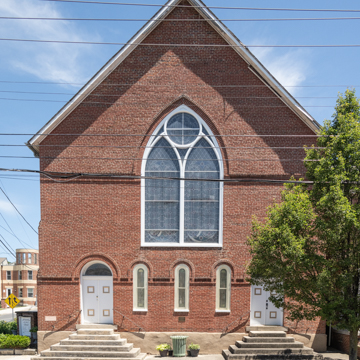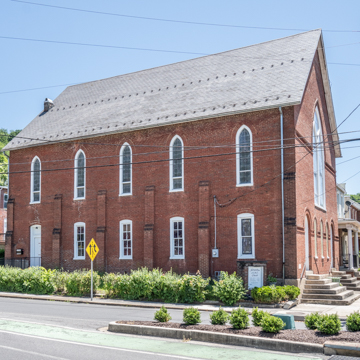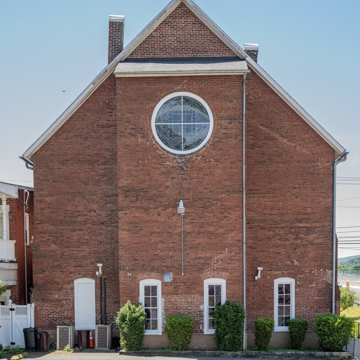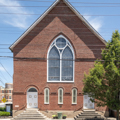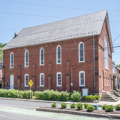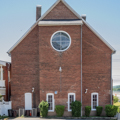This congregation was established in 1847 when the free Black worshippers at Centre Street Methodist Episcopal Church decided after many years of being segregated in the balcony that it was time to build their own sanctuary. A simple brick building was erected by 1848 and enlarged twice during the 1870s to accommodate a growing post-emancipation membership. In 1892 the current brick church replaced the earlier structure. It follows the common Methodist plan comprised of a worship space on the second floor of a gable-front building with meeting spaces below. The interior is plain, with three sections of curved pews facing the altar. Metropolitan AME is part of the Decatur Heights National Register Historic District, an early neighborhood in northeast Cumberland that gradually became predominantly African American. In addition to many vernacular houses, the district includes the former Carver School (1921; 340–344 Frederick), the designated Black regional high school until desegregation of local schools in 1955.
You are here
METROPOLITAN AME CHURCH
If SAH Archipedia has been useful to you, please consider supporting it.
SAH Archipedia tells the story of the United States through its buildings, landscapes, and cities. This freely available resource empowers the public with authoritative knowledge that deepens their understanding and appreciation of the built environment. But the Society of Architectural Historians, which created SAH Archipedia with University of Virginia Press, needs your support to maintain the high-caliber research, writing, photography, cartography, editing, design, and programming that make SAH Archipedia a trusted online resource available to all who value the history of place, heritage tourism, and learning.


